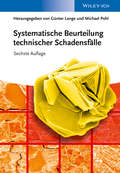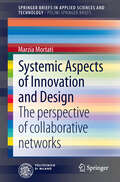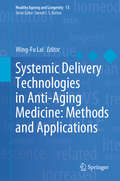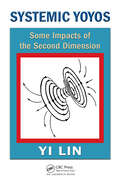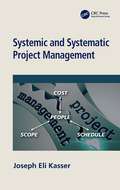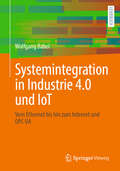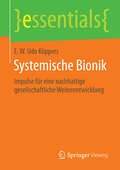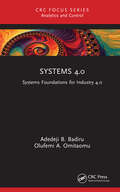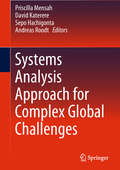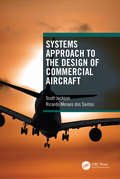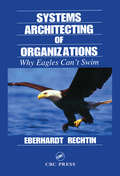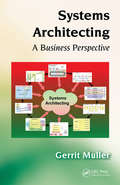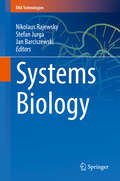- Table View
- List View
Systematische Auslegung von Karosseriekonzepten hinsichtlich minimaler Umweltwirkungen in einer frühen Konzeptphase (AutoUni – Schriftenreihe #157)
by Lars ReimerWährend bei konventionell angetriebenen Fahrzeugen die Nutzungsphase maßgeblich für die Umweltwirkungen im Lebenszyklus verantwortlich ist, verlagern sich die Umweltwirkungen im Lebenszyklus eines batterieelektrisch angetriebenen Fahrzeuges in Abhängigkeit des Energiemix für das Laden in die Produktionsphase. Folglich bedarf es neben Maßnahmen zur Reduktion der Umweltwirkungen in der Nutzungsphase ebenfalls Maßnahmen zu Optimierungen in der Produktionsphase. Neben der Batteriefertigung, die etwa 46 % der Treibhausgasemissionen in der Produktionsphase verursacht, zeigt auch die Fertigung der Karosserie mit etwa 26 % ein Potential zur Reduktion der Umweltwirkungen. Daher wird eine Konstruktionsmethodik entwickelt, mit der Karosseriekonzepte hinsichtlich minimaler Umweltwirkungen und bei Gewährleistung ihrer Funktionalität und Fertigbarkeit sowie bei Berücksichtigung variierender Lebenszyklusszenarien ausgelegt werden können.
Systematische Beurteilung technischer Schadensfälle
by Michael Pohl Günter LangeZunächst stehen bei der Havarie technischer Systeme die Fragen nach Sicherheit und Kosten im Vordergrund. Aber erst durch die systematische Analyse der schadensauslösenden Mechanismen bekommt man den Schlüssel zur nachhaltigen Prophylaxe in dieHand. Das defekte Bauteil ist der ?Datenträger? für den Werkstoff und seinen Zustand sowie für die Beanspruchungen, die er erfahren hat und für den Mechanismus seines Versagens. Die Untersuchungsmethoden der Materialwissenschaft und Werkstofftechnik sind in der Lage, diese Informationen zu entschlüsseln. Durch einen Ist/Soll-Vergleich lässt sich der Schadensauslöser dingfest machen.Das vorliegende Buch ist aus einem gleichnamigen Seminar hervorgegangen. Dieses Seminar hat in mehr als 30 Jahren gezeigt, dass Schadensfälle in überwiegender Zahl auf Zuwiderhandeln gegen bekannte Regeln der Technik beruhen. Daher liegt der Fokusdieses Nachschlagewerks auf der systematischen Gliederung des Fachgebietes und der anschaulichen Erklärung der Schadensmechanismen in der Theorie sowie durch die praktische Darstellung realer Schadensfälle. Diese Kenntnisse sind für Konstrukteure und Produktionstechniker ebenso von Interesse wie für Qualitäts- und Schadensanalytiker.
Systematische Bewertung des defektdominierten Ermüdungsverhaltens der additiv gefertigten austenitischen Stähle X2CrNiMo17-12-2 und X2CrNiMo18-15-3 (Werkstofftechnische Berichte │ Reports of Materials Science and Engineering)
by Felix Julian SternFelix Julian Stern befasst sich in dieser Arbeit mit der Charakterisierung von Stählen, die mittels pulverbettbasierter Laserfusion gefertigt wurden. Von besonderer Bedeutung sind für additiv gefertigte Werkstoffe prozessbedingte Defekte wie Poren und Anbindungsfehler, die insbesondere unter Ermüdungsbeanspruchung durch ihre Kerbwirkung zu einem vorzeitigen Versagen des Werkstoffs führen. Aus diesem Grund liegt der Fokus der Untersuchungen zu einem Teil auf einer systematischen Herangehensweise zur Charakterisierung des Defekteinflusses auf die Ermüdungseigenschaften, indem Defekte mit definierter Größe, Form und Lage in einen austenitischen Chrom-Nickel-Stahl erzeugt wurden. An diesen Proben erfolgten Ermüdungsversuche, deren Ergebnisse in Kombination mit den Informationen über den künstlich eingebrachten Defekt dazu verwendet werden, zwei bruchmechanische Modelle von Murakami sowie von Shiozawa zur Beschreibung des Ermüdungsverhaltens zu validieren. Im zweiten Teil werden diese Modelle dazu genutzt, den Einfluss des Legierungselements Stickstoff in einem weiteren austenitischen Chrom-Nickel-Stahl zu untersuchen, wobei sowohl das Ermüdungsverhalten an Luft als auch in korrosivem Medium erfolgreich beschrieben wird. Diese Arbeit bietet somit Ansätze zur systematischen Bewertung des Einflusses von Defekten auf additiv gefertigte Werkstoffe und zur Beschreibung des Ermüdungsverhaltens unter korrosiver Beanspruchung.
Systematische Steigerung der Energieeffizienz im Karosseriebau (AutoUni – Schriftenreihe #150)
by Hanno TeiwesDie vorliegende Dissertation präsentiert ein Konzept zur Steigerung der Energieeffizienz im Karosseriebau um durchschnittlich 10-15%. Die dafür benötigte Energietransparenz wird durch die strukturierte energetische Analyse bestehender Karosseriebauanlagen erreicht. Weiterhin besteht bereits im Karosseriebauplanungsprozess die Möglichkeit einer Energieprognose der zu planenden Arbeitsgruppen als auch des energetischen Lastprofils. In Abhängigkeit der energetischen Bewertung werden mit Hilfe eines Expertensystems entsprechend zu ergreifende Maßnahmen dem Planer zur Verfügung gestellt.
Systematisches Konstruieren: Praxisnah und prägnant (essentials)
by Markus HahneDieses essential bietet einen theoriefreien Einblick in den faszinierenden und diffizilen Entstehungsprozess technischer Produkte, der anhand eines begleitenden Praxisbeispiels einfach nachvollzogen und bis zur ersten eigenen Maschinenkonstruktion selbst weiterentwickelt werden kann. Hierbei helfen die vorgestellten Methoden und Beispiele ebenso wie der Aufbau des essentials. Der Konstruktionsprozess wird in seinem natürlichen Verlauf nachgezeichnet. Zugleich wird das bereichsübergreifende Spektrum aller konstruktionsrelevanten Bereiche aufgezeigt sowie auf wichtige Entscheidungspunkte hingewiesen.
Systeme von Turbofan-Triebwerken: Funktionen der Triebwerkssysteme von Verkehrsflugzeugen
by Andreas Linke-DiesingerUm das Funktionsprinzip von Turbinentriebwerken zu verstehen, reicht es nicht aus, das grundsätzliche Funktionsprinzip einer Gasturbine zu kennen. Es ist ebenfalls erforderlich, die Funktionen und den Aufbau der Triebwerkssysteme zu verstehen. Dieses Buch bietet eine Einführung in die Systemfunktionen von modernen Turbofan-Triebwerken. Es ist für Leser geschrieben, die mit dem Funktionsprinzip des Turbinentriebwerks vertraut sind und sich grundlegend mit den Funktionen der Triebwerkssysteme befassen wollen. Mit Hilfe dieses Buches erhält der Leser auch eine Orientierung in dem scheinbaren Gewirr von Rohrleitungen, Schläuchen, Kabeln und Systembauteilen an einem Turbofan-Triebwerk. In diesem Buch findet der Leser Informationen über den Betrieb der Triebwerkssysteme, die Aufgaben ihrer Komponenten und die in der Luftfahrtindustrie übliche Terminologie. Die englischen Begriffe werden ebenfalls genannt oder auch im Text verwendet, wenn dies sinnvoll ist. Die Triebwerkssysteme werden anhand von Beispielen erklärt, die von heute in Verwendung befindlichen Triebwerkstypen verschiedener Hersteller stammen. Dieses Buch ist eine nützliche Informationsquelle für Mechaniker und Ingenieurs-Studenten. Auch Flugschüler in der Berufspilotenausbildung finden hier Informationen, die das in ihrer Ausbildung vermittelte Wissen erweitern. Selbst für Leser ohne Ingenieursausbildung und für solche, die sich nicht beruflich mit der Materie befassen, bietet das Buch umfassende und leicht verständliche Informationen. Es hilft ihnen, die Funktionsprinzipien der Systeme von Turbofan-Triebwerken zu verstehen.
Systemführung: Betrieb elektrischer Energieübertragungsnetze
by Karl Friedrich SchäferIn diesem Buch werden die wesentlichen Aufgaben der Systemführung von elektrischen Übertragungsnetzen beschrieben. Dazu gehören die Netzführung, die Einhaltung der Systembilanz, die Gewährleistung der Systemsicherheit und die Koordinierung des Stromhandels. Das Buch gibt einen Überblick über den Aufbau und die Struktur von Übertragungsnetzen sowie über deren geschichtliche Entwicklung. Die Einbindung der nationalen Übertragungsnetze in die europäische Verbundsystemführung und in die Sicherheitszentren ist ebenfalls Bestandteil dieses Buches. Es werden der Aufbau und die Aufgaben von Schaltleitungen beschrieben. Die künftige Entwicklung im Bereich der Systemführung wird an den Beispielen neuer Visualisierungskonzepte und kurativem Engpassmanagement skizziert.
Systemführung: Betrieb elektrischer Energieübertragungsnetze
by Karl Friedrich SchäferIn diesem Buch werden die wesentlichen Aufgaben der Systemführung von elektrischen Übertragungsnetzen beschrieben. Dazu gehören die Netzführung, die Einhaltung der Systembilanz, die Gewährleistung der Systemsicherheit und die Koordinierung des Stromhandels. Das Buch gibt einen Überblick über den Aufbau und die Struktur von Übertragungsnetzen sowie über deren geschichtliche Entwicklung. Die Einbindung der nationalen Übertragungsnetze in die europäische Verbundsystemführung und in die Sicherheitszentren ist ebenfalls Bestandteil dieses Buches. Es werden der Aufbau und die Aufgaben von Schaltleitungen beschrieben. Die künftige Entwicklung im Bereich der Systemführung wird an den Beispielen neuer Visualisierungskonzepte und kurativem Engpassmanagement skizziert.
Systemic Aspects of Innovation and Design
by Marzia MortatiThe book provides a snapshot of a hot topic - the systemic nature of innovation and its relevance to design - with a trifold perspective: the academic level - the literature on innovation studies and design is often neglected and a clear connection between the two topics taken for granted; the research level - collaborative models are currently considered great opportunities for transforming consumption, production and distribution of goods, but a clear scholarly discourse is still forming; the political level - the European Commission and the OECD are devoting much effort to understanding and measuring the impact of design in innovation processes and firms and a clear contribution would greatly support this path. Thus the book provides an informed, historical and nuanced perspective to the relationship between design and innovation to contribute to all three levels and to propose a point of view that goes beyond aesthetics and meanings.
Systemic Circular Economy Solutions for Fiber Reinforced Composites (Digital Innovations in Architecture, Engineering and Construction)
by Marcello Colledani Stefano TurriThis open access book provides an overview of the work undertaken within the FiberEUse project, which developed solutions enhancing the profitability of composite recycling and reuse in value-added products, with a cross-sectorial approach. Glass and carbon fiber reinforced polymers, or composites, are increasingly used as structural materials in many manufacturing sectors like transport, constructions and energy due to their better lightweight and corrosion resistance compared to metals. However, composite recycling is still a challenge since no significant added value in the recycling and reprocessing of composites is demonstrated. FiberEUse developed innovative solutions and business models towards sustainable Circular Economy solutions for post-use composite-made products. Three strategies are presented, namely mechanical recycling of short fibers, thermal recycling of long fibers and modular car parts design for sustainable disassembly and remanufacturing. The validation of the FiberEUse approach within eight industrial demonstrators shows the potentials towards new Circular Economy value-chains for composite materials.
Systemic Delivery Technologies in Anti-Aging Medicine: Methods and Applications (Healthy Ageing and Longevity #13)
by Wing-Fu LaiThis book presents a multidisciplinary assessment of the state of science in the use of systemic delivery technologies to deliver anti-aging therapeutics now under development. There is a gap between basic aging research and the development of intervention technologies. This major obstacle must be overcome before biogerontological interventions can be put into clinical practice. As biogerontology comes to understand aging as a systemic degenerative process, it is clear that there is a pressing need for technologies that enable cells and tissues in a fully developed adult body to be manipulated systemically to combat aging. The authors review advances in the chemistry and engineering of systemic delivery methods and analyze the strengths and limitations of each.The book is organized into six sections. The first offers an overview of the need for systemic delivery technologies alongside the development of anti-aging therapies and describes approaches that will be required for studying the properties and efficiency of carriers for systemic delivery. Sections II, III and IV describe recent advances in a range of strategies that may enable systemic delivery to help combat aging conditions ranging from cell senescence to decline in immune function and hormonal secretion. Section V discusses practical strategies to engineer and optimize the performance of delivery technologies for applications in systemic delivery, along with their working principles. The final section discusses technical and biological barriers that must be overcome as systemic delivery technologies move from research laboratory to clinical applications aimed at tackling aging and age-associated diseases.Benefiting scholars, students and a broader audience of interested readers, the book includes helpful glossary sections in each chapter, as well as sidebars that highlight important notes, and questions for future research.
Systemic Design Methodologies for Electrical Energy Systems: Analysis, Synthesis and Management
by Xavier RoboamThis book proposes systemic design methodologies applied to electrical energy systems, in particular analysis and system management, modeling and sizing tools.It includes 8 chapters: after an introduction to the systemic approach (history, basics & fundamental issues, index terms) for designing energy systems, this book presents two different graphical formalisms especially dedicated to multidisciplinary devices modeling, synthesis and analysis: Bond Graph and COG/EMR. Other systemic analysis approaches for quality and stability of systems, as well as for safety and robustness analysis tools are also proposed. One chapter is dedicated to energy management and another is focused on Monte Carlo algorithms for electrical systems and networks sizing.The aim of this book is to summarize design methodologies based in particular on a systemic viewpoint, by considering the system as a whole. These methods and tools are proposed by the most important French research laboratories, which have many scientific partnerships with other European and international research institutions. Scientists and engineers in the field of electrical engineering, especially teachers/researchers because of the focus on methodological issues, will find this book extremely useful, as will PhD and Masters students in this field.
Systemic Yoyos: Some Impacts of the Second Dimension (Systems Evaluation, Prediction, and Decision-Making)
by Yi LinA Novel Method to Analyze Problems and Encourage Systemic ThinkingReal-Life Case Studies Illustrate the Application of the Systemic Yoyo Model in Diverse AreasWritten by the co-creator of the systemic yoyo model, Systemic Yoyos: Some Impacts of the Second Dimension shows how the yoyo model and its methodology can be employed to study many unsettled
Systemic and Systematic Project Management
by Joseph Eli KasserThis book applies systems thinking to treat project management in a systemic and systematic manner from a problem-solving perspective. Considering the project as a system, the book discusses traditional project planning and organizing, as well as some neglected aspects of the project, namely how to prevent cost and schedule escalation, how to deal with change, recognize problems in time to prevent project failure and what to do when things go wrong during the implementation states of a project. This book provides you with a better understanding of the systems approach to problem-solving and project management that will enable you to be more successful at managing projects. Features Treats projects as systems Presents project management as a problem-solving paradigm Discusses how to incorporate prevention into planning and how to show the value Describes what to do and how to cope with unanticipated problems that arise during the project implementation state Introduces new tools and techniques
Systemic and Systematic Risk Management
by Joseph E. KasserThis book discusses risk management as it applies to problem-solving for simple, complex and wicked problems faced by policy creators and implementors, project managers and systems engineers in the context of policies, large engineering projects (LEPs), projects and systems. When applying systems thinking to risk management, it can be seen that risk management applies to almost every action taken in daily life. This book: Introduces the systems approach of integrating risk management into policy creation and implementation, project management and systems engineering, such as the risk framework and the Firm Fixed Price (FFP) contract with penalties and bonuses. Introduces a number of out-of-the box concepts building on the application of the systems thinking tools in the system thinker’s toolbox. Points out that integrating risk management into policy and project management and systems engineering is just good management and engineering practice. Discusses the flow of risk in a policy from creation through implementation via LEPs and simpler projects, identifying where risks arise and where they should be dealt with. Presents the risks in the relationship between policy creation, implementation, project management and systems engineering. Discusses risks throughout the policy implementation process and shows how the nature of risks changes from political to financial to technological as implementation proceeds. Discusses managing complexity and specifies the minimum number of elements in a system for it to be defined as, and managed as, complex. Points out that in most instances the traditionally ignored major implementation risk is that of poor performance by personnel. Shows how to proactively incorporate prevention into planning in order to prevent risks, as well as how to mitigate them when they occur.
Systemintegration in Industrie 4.0 und IoT: Vom Ethernet bis hin zum Internet und OPC UA
by Wolfgang BabelWer Industrie 4.0 sagt, meint Internet oder auch IoT und wer IoT sagt, meint auch Ethernet. Alle drei Begriffe sind eng miteinander verbunden. Das Buch zeigt die geschichtliche Entwicklung und die Technische Entwicklung von Hardware, Software sowie Protokolle von Ethernet über Internet (IoT) bis hin zu OPC UA, der heute besten plattformunabhängigen Kommunikationsvernetzung. Ein Fokus von Industrie 4.0 ist die Betrachtung und Einordnung der Künstlichen Intelligenz und der Prädiktiven Wartung . Es werden Beispiele für Vernetzungstopologien von der Fabrikebene über die SPS-Ebene, SCADA/HMI-Ebene MES bis hin zur ERP-Ebene erläutert. Schwerpunkte sind Feldbusse, Internet und Ethernet TCP/IP. Es werden die verschiedenen Ethernet/Internet- und echtzeitfähigen Feldbusse wie PROFINET, EtherCAT, Ethernet/IP sowie deren Implementierung erläutert. Thema sind horizontale und vertikale Kommunikationsstrukturen, Feldbusse und Kommunikationsprotokolle gemäß des OSI-Modells und der Automatisierungspyramide gezeigt und wie diese in modernen Industrieanwendungen Eingang finden.
Systemische Bionik: Impulse für eine nachhaltige gesellschaftliche Weiterentwicklung (essentials)
by E. W. Udo KüppersDieses Essential vermittelt einen grundlegenden Einblick in die Systemische Bionik als Grenzen überwindende Disziplin. Der Autor erläutert auf leicht verständliche Weise, welchen Wert die Bionik für ganzheitliche Problemlösungen bietet und welche Rolle eine intakte Natur dabei spielt. Wegweisend und zielführend bei diesem systembionischen Vorgehensmodell ist das Erkennen von Zusammenhängen in Natur und Technik.
Systemleichtbau für die Luftfahrt (essentials)
by Martin Wiedemannessentials liefern aktuelles Wissen in konzentrierter Form. Die Essenz dessen, worauf es als „State-of-the-Art“ in der gegenwärtigen Fachdiskussion oder in der Praxis ankommt. essentials informieren schnell, unkompliziert und verständlichals Einführung in ein aktuelles Thema aus Ihrem Fachgebietals Einstieg in ein für Sie noch unbekanntes Themenfeldals Einblick, um zum Thema mitreden zu könnenDie Bücher in elektronischer und gedruckter Form bringen das Fachwissen von Springerautor*innen kompakt zur Darstellung. Sie sind besonders für die Nutzung als eBook auf Tablet-PCs, eBook-Readern und Smartphones geeignet. essentials sind Wissensbausteine aus den Wirtschafts-, Sozial- und Geisteswissenschaften, aus Technik und Naturwissenschaften sowie aus Medizin, Psychologie und Gesundheitsberufen. Von renommierten Autor*innen aller Springer-Verlagsmarken.Dies ist ein Open-Access-Buch.
Systems 4.0: Systems Foundations for Industry 4.0 (Analytics and Control)
by Adedeji B. Badiru Olufemi A. OmitaomuThe underlying premise for Industry 4.0 is a systems approach. This book introduces the concept of Systems 4.0 as a foundational requirement for the success of Industry 4.0 in the same way that Quality 4.0 has emerged to advance Industry 4.0. Systems 4.0: Systems Foundations for Industry 4.0 discusses the role of the professional engineer in advancing commerce and industry. It offers an introduction to Industry 4.0 and how to leverage the digital era to improve industrial operations. The book presents and describes the first industrial revolution on through to the fourth revolution and provides general systems engineering principles that can be used with Industry 4.0. This is a practical guide for professional engineers and consultants involved in Industrial Engineering, Mechanical Engineering, Operations Management and can also be used as a reference for students.
Systems Analysis Approach for Complex Global Challenges
by Priscilla Mensah David Katerere Sepo Hachigonta Andreas RoodtThis book, which contains a collection of review articles as well as focus on evidence-based policy making, will serve as a valuable resource not just for all postgraduate students conducting research using systems analysis thinking but also for policy makers. To our knowledge, a book of this nature which also has a strong African focus is currently not available. The book examines environmental and socio-economic risks with the aim of providing an analytical foundation for the management and governance of natural resources, disasters, addressing climate change, and easing the technological and ecological transitions to sustainability. It provides scientific and strategic analysis to better understand the dynamics of future energy transitions, their main driving forces, enabling factors, barriers, as well as their consequences for the social, economic and environmental dimensions of human wellbeing. Science-based policy advice is achieved through an integrated assessment and modeling of how to simultaneously address the major energy policy challenges in the areas of environment (climate change and air pollution), energy poverty (or access to affordable and clean energy for the poor), energy security and reliability. It also aims to improve our understanding of ecosystems and their management in today’s changing world—in particular, the current state of ecosystems, and their ecological thresholds and buffering capacities. It provides support for policy makers in developing rational, realistic and science-based regional, national and global strategies for the production of fuel, food and fibre that sustain ecosystem services and safeguard food security. Finally, it addresses the human development dimension of global change based on comprehensive studies on the changing size and composition of human populations around the world by analyzing both their impacts and the differential vulnerabilities by age, gender and level of education.
Systems Approach to the Design of Commercial Aircraft
by Scott Jackson Ricardo Moraes dos SantosWhile aviation fatalities have thankfully fallen dramatically in recent years, the phenomena of complexity and cognitive bias have been shown to be factors in many accidents. An understanding of these phenomena promises to bring the fatality rate even lower, and a deeper understanding of commercial aircraft in the context of systems engineering will contribute to that trend. Systems Approach to the Design of Commercial Aircraft describes commercial aircraft from an advanced systems point of view, addressing complexity, cybersecurity, and systems architecting. In addition, it provides an explanation of systems engineering, describes how systems engineering forms a framework for commercial aircraft, covers how systems engineering and systems architecting relate to commercial aircraft, addresses complexity, and shows how humans fit into systems engineering and the importance for commercial aircraft. It goes onto present how cybersecurity plays an important role in the mix and how human interface fits in. The readership includes designers of aircraft, manufacturers, researchers, systems engineers, and students. Scott Jackson is a fellow of the International Council on Systems Engineering (INCOSE) and the author of Systems Engineering for Commercial Aircraft (1997 and 2015) in English and Chinese. Ricardo Moraes dos Santos is a senior systems engineer at EMBRAER S/A and an INCOSE Brazil chapter director. He works with Architecting process (Corporate) and is head of Cybersecurity and Safety (STPA Applications) at EMBRAER S/A.
Systems Architecting of Organizations: Why Eagles Can't Swim (Systems Engineering Ser. #13)
by Eberhardt RechtinThe most difficult questions facing organizations today do not have scientifically or mathematically provable solutions. Many answers that do exist depend upon time and circumstance. Systems Architecting of Organizations: Why Eagles Can't Swim tackles a very difficult dilemma: how do even highly respected organizations maintain their vaunted excellence, accommodate the new world of global communications, transportation, economics and multinational security, and still survive against stiff competition already in place? As they are finding out, depending upon the circumstances, the demands of excellence on the one hand, and of change on the other, can be cruelly irreconcilable. This book does not just describe business strengths and weaknesses. First, it identifies potential weaknesses, then offers guidelines and insights to address them. Its approach is architectural and heuristic. Second, this book is about maintaining success in a dynamic world, not about achieving it in a static one; few are clear on what to do and not to do in the face of major change. Systems Architecting of Organizations: Why Eagles Can't Swim helps professionals gain new perspectives when reviewing their own organizations and to see problems and opportunities previously not apparent. Features
Systems Architecting: A Business Perspective
by Gerrit MullerDerived from industry-training classes that the author teaches at the Embedded Systems Institute at Eindhoven, the Netherlands and at Buskerud University College at Kongsberg in Norway, Systems Architecting: A Business Perspective places the processes of systems architecting in a broader context by juxtaposing the relationship of the systems archit
Systems Architecting: Methods and Examples
by Howard EisnerThis book provides a new approach to systems architecting not previously available. The book provides a compact innovative procedure for architecting any type of system. Systems Architecting: Methods and Examples describes a method of system architecting that is believed to be a substantial improvement over "methods" previously covered in other systems architecting books. Incorporates analytic procedure (decision analysis) Defines and evaluates alternative architectures Improves upon existing architecting methods Considers cost-effectiveness of alternatives Provides for competitive analysis and its advantages Shows alternatives on one simple and easily understood page With the book’s relatively straightforward approach, it shows how to architect systems in a way that both developers and clients/customers can readily understand. It uses one of the essential principles suggested by Rechtin and Maier, namely, Simplify, Simplify, Simplify. Systems engineers as well as students taking systems engineering courses will find this book of interest.
Systems Biology (Rna Technologies Ser.)
by Jan Barciszewski Stefan Jurga Nikolaus RajewskyMany breakthroughs in experimental devices, advanced software, as well as analytical methods for systems biology development have helped shape the way we study DNA, RNA and proteins, on the genomic, transcriptional, translational and posttranslational level. This book highlights the comprehensive topics that encompass systems biology with enormous progress in the development of genome sequencing, proteomic and metabolomic methods in designing and understanding biological systems.Topics covered in this book include fundamentals of modelling networks, circuits and pathways, spatial and multi cellular systems, image-driven systems biology, evolution, noise and decision-making in single cells, systems biology of disease and immunology, and personalized medicine. Special attention is paid to epigenomics, in particular environmental conditions that impact genetic background. The breadth of exciting new data towards discovering fundamental principles and direct application of epigenetics in agriculture is also described.The chapter “Deciphering the Universe of RNA Structures and Trans RNA-RNA Interactions of Transcriptomes in vivo - from Experimental Protocols to Computational Analyses” is available open access under a CC BY 4.0 license via link.springer.com.

